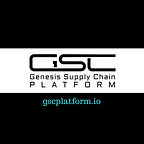The GSC Blockchain Traceability Solution
Why Traceability Matters
In early March of 2016, a Cessna 160G flown by a student pilot sustained significant damage during a forced landing in a field near Simmesport, Louisiana. The flight was under visual meteorological conditions and landing was forced after the engine lost power and deposited oil over the front windscreen. The Federal Aviation Administration inspected the incident and noted the following.
The crank case was cracked in multiple locations and the hole in the crank case was approximately 2.5 inches by 2.5 inches. … The #1 piston and rod assembly were jammed, wedged, and frozen in the cylinder and could not be disassembled. The rod assembly was fragmented and partially separated at the rod cap. The rod bolt broke at the split line of the rod and the rod cap. (NTSB, CEN16LA118)*
The cause of this accident was traced to the mechanic not having enough information when the engine was being serviced. He encountered difficulty when he had no reference information for the engine model and he utilized a parts catalog dated March 1977 which called for three separate pieces instead of a single assembly.
The front main crankshaft bearing (part #633398) with the separate thrust washer was removed from the engine. According to the most recent revision of the Continental Motors Overhaul Manual and Illustrated Parts catalogs (both dated 2011) the front main bearing (part #627246) with the thrust washer as part of the assembly should have been used (a one-piece assembly as opposed to three separate pieces). (NTSB, CEN16LA118)
The mechanic called Continental Motors for clarity after he encountered difficulty with the thrust washer and he was instructed to “torque the case down and then install the cylinders to ensure the thrust washer remained in place.” The Continental Motors representative did not ask what part was being used for the reassembly.
Issues like this happen far too often in the aviation industry. Fortunately, this event did not result in a loss of life, but each year hundreds of mistakes similar to this one happen. The industry desperately needs a cohesive system that provides traceability of parts and procedures.
The GSC Blockchain Platform
GSC will use blockchain technology to bring an unprecedented level of safety to the aviation market. Track and trace facilitated through the GSC Blockchain will enable end-to-end visibility for companies in the maintenance repair overhaul (MRO) market, continuous airworthiness management organizations (CAMO), manufacturers, regulators, suppliers, and all other stakeholders. Despite the MRO market being tightly regulated, logistical inefficiencies persist throughout the aircraft lifecycle. Inaccurate, out-of-date, or missing part information in catalogs and manuals plague mechanics. Poor controls and monitoring can result in non-qualified or incompatible parts being installed on aircraft. The GSC Blockchain platform addresses these inefficiencies with a blockchain traceability solution that increases the level of safety and accountability for stakeholders.
Aviation Lifecycles and Scheduled Obsolescence
Blockchain is a natural fit for a lifecycle management system where multiple parties are involved, motives may or may not be aligned, and personnel and systems may change over time. The GSC Blockchain provides trusted part traceability from manufacturer or supplier to installation. It is also able to handle particular scenarios and applications like inspection, repair, and revision wherever it may be applicable. The GSC Blockchain Platform allows stakeholders to enter documents into the blockchain with hashlinks, thereby preserving documentation necessary to the lifecycle of parts and equipment. With this system, maintenance mechanics can be certain about the compatibility of the part they are installing, regulatory bodies can monitor and verify records, and purchasers can avoid obsolete parts.
Visibility and Public Safety
The GSC Blockchain Platform is a market of visibility for all stakeholders in the system. Tokens are used to view the blockchain and they are rewarded to those who enter information into the blockchain. This is an incentivized system where cooperation is rewarded. The system is built on decentralized blockchain technology which is secure, tamper-proof, decentralized, highly available, and instantly provides relevant information users. Users of the GSC Blockchain Platform will reap huge savings by not wasting time searching through outdated parts catalogs and manuals. More importantly, this significantly improves the safety of the industry by preventing mistakes due to human error. This is a disruptive technological tool that will be essential to stakeholders in the aviation industry who are concerned with safety and efficiency.
Maxime Legros, GSC founder and CEO, is a professional logistician and purchaser in the aviation industry and he is committed to making the aviation industry a safer one. Traceability through blockchain is desperately needed and GSC is poised to deliver it. Those interested in learning more about Genesis Supply Chain and its plan for solving aviation traceability can find more information on the website www.gscplatform.io. The company ICO is currently in presale where qualified investors receive a significant discount on token purchases.
*National Transportation Safety Board. “NTSB Identification: CEN16LA11.” July 3, 2018. https://www.ntsb.gov/_layouts/ntsb.aviation/brief2.aspx?ev_id=20160303X23824&ntsbno=CEN16LA118&akey=1
Find out more about GSC Aviation here: https://gscplatform.io/
